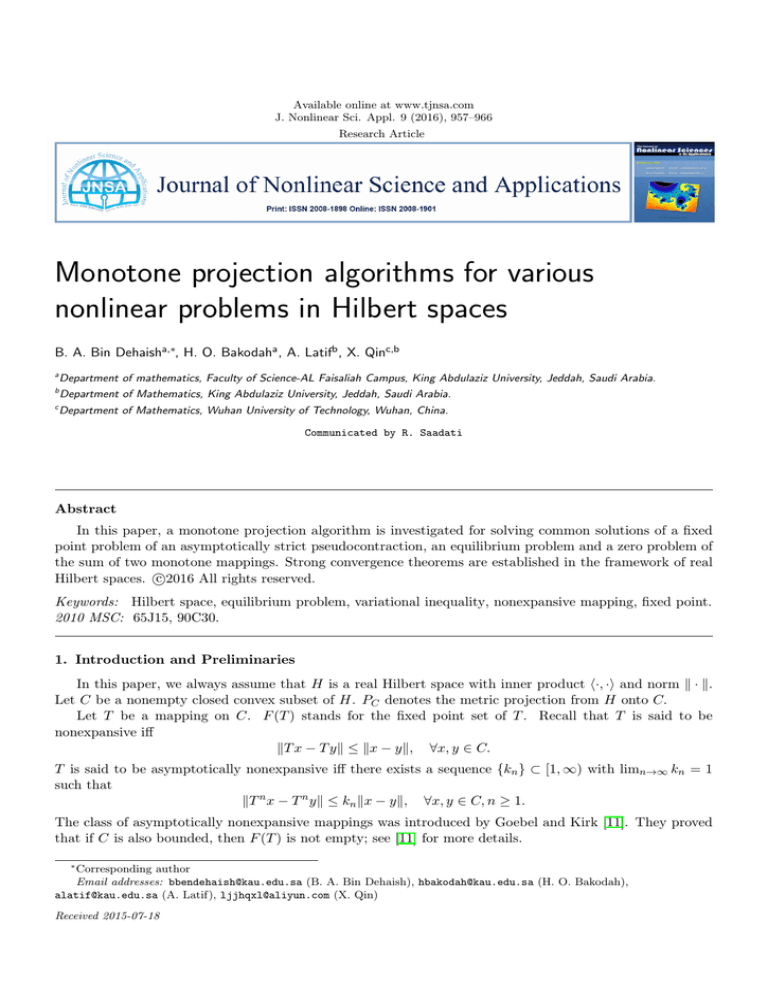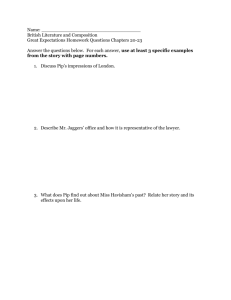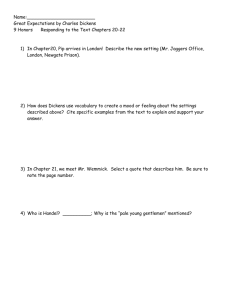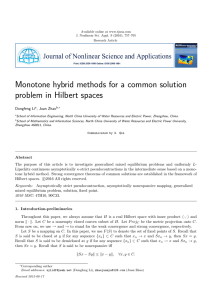
Available online at www.tjnsa.com
J. Nonlinear Sci. Appl. 9 (2016), 957–966
Research Article
Monotone projection algorithms for various
nonlinear problems in Hilbert spaces
B. A. Bin Dehaisha,∗, H. O. Bakodaha , A. Latifb , X. Qinc,b
a
Department of mathematics, Faculty of Science-AL Faisaliah Campus, King Abdulaziz University, Jeddah, Saudi Arabia.
b
Department of Mathematics, King Abdulaziz University, Jeddah, Saudi Arabia.
c
Department of Mathematics, Wuhan University of Technology, Wuhan, China.
Communicated by R. Saadati
Abstract
In this paper, a monotone projection algorithm is investigated for solving common solutions of a fixed
point problem of an asymptotically strict pseudocontraction, an equilibrium problem and a zero problem of
the sum of two monotone mappings. Strong convergence theorems are established in the framework of real
c
Hilbert spaces. 2016
All rights reserved.
Keywords: Hilbert space, equilibrium problem, variational inequality, nonexpansive mapping, fixed point.
2010 MSC: 65J15, 90C30.
1. Introduction and Preliminaries
In this paper, we always assume that H is a real Hilbert space with inner product h·, ·i and norm k · k.
Let C be a nonempty closed convex subset of H. PC denotes the metric projection from H onto C.
Let T be a mapping on C. F (T ) stands for the fixed point set of T . Recall that T is said to be
nonexpansive iff
kT x − T yk ≤ kx − yk, ∀x, y ∈ C.
T is said to be asymptotically nonexpansive iff there exists a sequence {kn } ⊂ [1, ∞) with limn→∞ kn = 1
such that
kT n x − T n yk ≤ kn kx − yk, ∀x, y ∈ C, n ≥ 1.
The class of asymptotically nonexpansive mappings was introduced by Goebel and Kirk [11]. They proved
that if C is also bounded, then F (T ) is not empty; see [11] for more details.
∗
Corresponding author
Email addresses: bbendehaish@kau.edu.sa (B. A. Bin Dehaish), hbakodah@kau.edu.sa (H. O. Bakodah),
alatif@kau.edu.sa (A. Latif), ljjhqxl@aliyun.com (X. Qin)
Received 2015-07-18
B. A. Bin Dehaish, H. O. Bakodah, A. Latif, X. Qin , J. Nonlinear Sci. Appl. 9 (2016), 957–966
958
T is said to be κ-strictly pseudocontractive iff there exists a constant κ ∈ [0, 1) such that
kT x − T yk2 ≤ kx − yk2 + κk(x − T x) − (y − T y)k2 ,
∀x, y ∈ C.
The class of strict pseudocontractions was introduced by Browder and Petryshyn [5]. It is clear that every
nonexpansive mapping is a 0-strict pseudocontraction.
T is said to be an asymptotically κ-strict pseudocontraction iff there exist a sequence {kn } ⊂ [1, ∞) with
limn→∞ kn = 1 and a constant κ ∈ [0, 1) such that
kT n x − T n yk2 ≤ kn kx − yk2 + κk(I − T n )x − (I − T n )yk2 ,
∀x, y ∈ C, n ≥ 1.
The class of asymptotically strict pseudocontractions is introduced by Qihou [20]. It is clear that every
asymptotically nonexpansive mapping is an asymptotically 0-strict pseudocontraction.
Let A : C → H be a mapping. Recall that A is said to be monotone iff
hAx − Ay, x − yi ≥ 0,
∀x, y ∈ C.
A is said to be strongly monotone iff there exists a constant α > 0 such that
hAx − Ay, x − yi ≥ αkx − yk2 ,
∀x, y ∈ C.
For such a case, we also say that A is an α-strongly monotone mapping. A is said to be inverse-strongly
monotone iff there exists a constant α > 0 such that
hAx − Ay, x − yi ≥ αkAx − Ayk2 ,
∀x, y ∈ C.
For such a case, we also say that A is an α-inverse-strongly monotone mapping. It is clear that A is
inverse-strongly monotone if and only if A−1 is strongly monotone.
Recall that the classical variational inequality problem is to find x ∈ C such that
hAx, y − xi ≥ 0,
∀y ∈ C.
(1.1)
It is known that x ∈ C is a solution to problem (1.1) if and only if x is a fixed point of mapping PC (I − rA),
where r > 0 is a constant and I is the identity mapping. Recently, iterative methods have been intensively
investigated for solving solutions of variational inequality (1.1) by many authors in the framework of Hilbert
spaces; see [8], [17], [18], [21], [22], [28], [30], and the references therein.
Let B be a set-valued mapping. In this paper, we use D(B) to denote the domain of B. Recall that
B is said to be monotone on H if for all x, y ∈ H, f ∈ Bx and g ∈ By imply hx − y, f − gi ≥ 0. A
monotone mapping B is maximal on H if the graph G(B) of B is not properly contained in the graph of
any other monotone mapping. It is known that a monotone mapping B is maximal if and only if, for any
(x, f ) ∈ H × H, hx − y, f − gi ≥ 0 for all (y, g) ∈ G(B) implies f ∈ Bx. Let r > 0 be a real number. We can
define the single-valued resolvent Jr = (I + rA)−1 . It is known that Jr : H → D(B) is firmly nonexpansive
and B −1 (0) = F (Jr ). Let A be a monotone mapping of C into H and NC v the normal cone to C at v ∈ C,
i.e.,
NC v = {w ∈ H : hv − u, wi ≥ 0, ∀u ∈ C}
and define a mapping T on C by
(
Av + NC v,
Tv =
∅,
v∈C
v∈
/ C.
Then T is maximal monotone and 0 ∈ T v if and only if hAv, u − vi ≥ 0 for all u ∈ C; see [24] and the
references therein.
Let F be a bifunction of C × C into R, where R denotes the set of real numbers. Consider the following
equilibrium problem.
Find x ∈ C such that F (x, y) ≥ 0, ∀y ∈ C.
(1.2)
B. A. Bin Dehaish, H. O. Bakodah, A. Latif, X. Qin , J. Nonlinear Sci. Appl. 9 (2016), 957–966
959
In this paper, the set of such an x ∈ C is denoted by EP (F ), i.e., EP (F ) = {x ∈ C : F (x, y) ≥ 0, ∀y ∈
C}.
To study problem (1.2), we may assume that F satisfies the following conditions:
(A1) F (x, x) = 0 for all x ∈ C;
(A2) F is monotone, i.e., F (x, y) + F (y, x) ≤ 0 for all x, y ∈ C;
(A3) for each x, y, z ∈ C,
lim sup F (tz + (1 − t)x, y) ≤ F (x, y);
t↓0
(A4) for each x ∈ C, y 7→ F (x, y) is convex and lower semi-continuous.
Recently, problem (1.2) was studied based on iterative methods by many authors; see [6], [13], [15],
[23], [31] and the references therein. The advantage of projection methods is that strong convergence is
guaranteed without any compact assumptions. And when C is a line variety, a closed ball, a closed cone
or a closed polytope, the computation of PC is easy to implement. Problem (1.2) is well known to be
very useful and efficient tools in mathematics. It provides a unified framework for studying many problems
arising in engineering sciences, structural analysis, and other fields; see, e.g., [1], [12], [26], [18], [19], [27].
A closely related subject of current interest is the problem of finding a common solution of nonlinear
operator-equations, variational inequality (1.1) and equilibrium problem (1.2). The motivation for this
subject is mainly due to its possible applications to mathematical modeling of concrete complex problems.
Indeed, a classical strategy to construct such mathematical models consists in introducing constraints which
can be expressed as subproblems of a more general problem. In some cases, these constraints can be
given by variational inequalities, by fixed point problems, or by problems of different types [2, 3], [6]-[10],
[14, 16, 17, 18, 29].
Motivated by the research going on this direction, we study a regularization projection algorithm for
solving common solutions of variational inequality (1.1), equilibrium problem (1.2) and fixed points of
an asymptotically strict pseudocontraction. Possible computation errors are taken into account. Strong
convergence theorems are established in the framework of real Hilbert spaces.
In order to prove our main results, we also need the following lemmas.
Lemma 1.1 ([4]). Let C be a nonempty closed convex subset of H and let F : C × C → R be a bifunction
satisfying (A1)-(A4). Then, for any r > 0 and x ∈ H, there exists z ∈ C such that
1
F (z, y) + hy − z, z − xi ≥ 0,
r
∀y ∈ C.
Further, define
1
Tr x = {z ∈ C : F (z, y) + hy − z, z − xi ≥ 0,
r
for all r > 0 and x ∈ H. Then, the following hold:
∀y ∈ C}
(a) Tr is single-valued;
(b) Tr is firmly nonexpansive, i.e., for any x, y ∈ H,
kTr x − Tr yk2 ≤ hTr x − Tr y, x − yi;
(c) F (Tr ) = EP (F );
(d) EP (F ) is closed and convex.
Lemma 1.2 ([25]). Let C be a nonempty closed convex subset of H and let T : C → C an asymptotically
strict pseudocontraction. Then I − T is demi-closed, this is, if {xn } is a sequence in C with xn * x and
xn − T xn → 0, then x ∈ F (T ).
B. A. Bin Dehaish, H. O. Bakodah, A. Latif, X. Qin , J. Nonlinear Sci. Appl. 9 (2016), 957–966
960
2. Main results
Theorem 2.1. Let C be a nonempty closed convex subset of H and let F be a bifunction from C × C to R
which satisfies (A1)-(A4). Let A : C → H be an α-inverse-strongly monotone mapping and let B : H ⇒ H
be a maximal monotone mapping such that D(B) ⊂ C. Let T : C → C be an asymptotically κ-strict
pseudocontraction. Assume that Ω = F (T ) ∩ (A + B)−1 (0) ∩ EP (F ) is not empty and bounded. Let {rn }
and {sn } be two positive real number sequences. Let {αn } and {βn } be real number sequences in (0, 1). Let
{xn } be a sequence generated in the following process:
x1 ∈ C,
C1 = C,
F (z , z) + 1 hz − z , z − J (x − r Ax + e )i ≥ 0, ∀z ∈ C,
n n
rn n
n
n
n
n
sn
yn = αn xn + (1 − αn )βn zn + (1 − βn )(1 − αn )T n zn ,
√
√
Cn+1 = {λ ∈ Cn : kyn − λk ≤ kxn − λk + ( kn − 1)Θn + kn ken k},
x
n ≥ 1,
n+1 = PCn+1 x1 ,
P
where Jrn = (I +rn A)−1 , {en } is a sequence in H such that ∞
n=1 ken k < ∞ and Θn = sup{kxn −qk : q ∈ Ω}.
Assume that the control sequences satisfy the following restrictions: 0 ≤ αn ≤ a < 1, κ ≤ βn ≤ b < 1,
lim inf n→∞ sn > 0 and 0 < r ≤ rn ≤ r0 < 2α, where a, b, r, r0 are real constants. Then {xn } converges
strongly to PΩ x1 .
Proof. From the construction of Cn , we see that Cn is convex and closed so that the metric projection onto
Cn is well defined. For any x, y ∈ C, we see that
k(I − rn A)x − (I − rn A)yk2
= kx − yk2 − 2rn hx − y, Ax − Ayi + rn2 kAx − Ayk2
≤ kx − yk2 − rn (2α − rn )kAx − Ayk2 .
Using the restrictions imposed on {rn }, we see that k(I − rn A)x − (I − rn A)yk ≤ kx − yk. This proves that
I − rn A is nonexpansive.
Next, we show that Ω ⊂ Cn . It is clear that Ω ⊂ C1 = C. Suppose that Ω ⊂ Ch for some h ≥ 1. Next,
we show that Ω ⊂ Ch+1 for the same h. Let p ∈ Ω be fixed arbitrarily. By use of Lemma 1.1, we find that
zh = Tsh wh , where wh = Jrh xh − rh Axh + eh ). It follows from the firm nonexpansivity of the resolvent that
kzh − pk ≤ kwh − pk
≤ k xh − rh Axh + eh ) − p − rh Ap)k
(2.1)
≤ kxh − pk + keh k.
Since T is an asymptotically κ-strict pseudocontraction, we have
kβh zh + (1 − βh )T h zh − pk2
≤ βh kyh − pk2 + (1 − βh )(kh kyh − pk2 + κk(zh − p) − (T h zh − T h p)k2 )
− βh (1 − βh )k(yh − p) − (T h zh − T h p)k2
≤ kh kzh − pk2 − (1 − βh )(βh − κ)k(zh − p) − (T h zh − T h p)k2 .
Using the restrictions imposed on sequence {βn }, we find that
p
kβh zh + (1 − βh )T h zh − pk ≤ kh kzh − pk.
It follows from (2.1) and (2.2) that
(2.2)
B. A. Bin Dehaish, H. O. Bakodah, A. Latif, X. Qin , J. Nonlinear Sci. Appl. 9 (2016), 957–966
961
kyh − pk ≤ αh kxh − pk + (1 − αh )kβh zh + (1 − βh )T h zh − pk
p
≤ αh kxh − pk + (1 − αh ) kh kzh − pk
p
p
≤ kxh − pk + ( kh − 1)kxh − pk + kh keh k.
This proves that Ω ⊂ Cn .
Now, we are in a position to show that {xn } is bounded. Note that xn = PCn x1 . For any p ∈ Ω ⊂ Cn ,
we have kx1 − xn k ≤ kx1 − pk. In particular, we have
kx1 − xn k ≤ kx1 − PΩ x1 k.
This implies that {xn } is bounded. Since {xn } is bounded, we see that there exists a subsequence {xni } of
{xn } which converges weakly to x. Since xn = PCn x1 and xn+1 = PCn+1 x1 ∈ Cn+1 ⊂ Cn , we have that
0 ≤ hx1 − xn , xn − xn+1 i
= hx1 − xn , xn − x1 + x1 − xn+1 i
≤ −kx1 − xn k2 + kx1 − xn kkx1 − xn+1 k.
Hence, we have
kx1 − xn k ≤ kx1 − xn+1 k.
It follows that limn→∞ kxn − x1 k exists. Since
kxn − xn+1 k2
= kxn − x1 k2 + 2hxn − x1 , x1 − xn + xn − xn+1 i + kx1 − xn+1 k2
= kxn − x1 k2 − 2kxn − x1 k2 + 2hxn − x1 , xn − xn+1 i + kx1 − xn+1 k2
≤ kx1 − xn+1 k2 − kxn − x1 k2 ,
we find that
lim kxn − xn+1 k = 0.
n→∞
(2.3)
√
√
Since xn+1 = PCn+1 x1 ∈ Cn+1 , we see that kyn − xn+1 k ≤ kxn − xn+1 k + ( kn − 1)Θn + kn ken k. It follows
that
p
p
kyn − xn k ≤ 2kxn+1 − xn k + ( kn − 1)Θn + kn ken k.
√
√
Since ( kn − 1)Θn + kn ken k → 0 as n → ∞, we obtain from (2.3) that
lim kxn − yn k = 0.
n→∞
On the other hand, we have
kxn − yn k = (1 − αn )kxn − βn zn + (1 − βn )T n zn k.
Using the restriction imposed on {αn }, we find that
lim kxn − βn zn + (1 − βn )T n zn k = 0.
n→∞
Since Tsn is firmly nonexpansive, we find that
kzn − pk2 ≤ hwn − p, zn − pi
1
= kwn − pk2 + kzn − pk2 − kzn − wn k2 .
2
(2.4)
B. A. Bin Dehaish, H. O. Bakodah, A. Latif, X. Qin , J. Nonlinear Sci. Appl. 9 (2016), 957–966
962
That is,
kzn − pk2 ≤ kwn − pk2 − kwn − zn k2
≤ kxn − pk2 + ken k(ken k + 2kxn − pk) − kwn − zn k2 .
It follows that
kyn − pk2 ≤ αn kxn − pk2 + (1 − αn )kn kzn − pk2
≤ kn kxn − pk2 + kn ken k(ken k + 2kxn − pk) − (1 − αn )kn kwn − zn k2 .
Hence, we have
(1 − αn )kn kwn − zn k2 ≤ (kn − 1)kxn − pk2 + kn ken k(ken k + 2kxn − pk)
+ kxn − pk2 − kxn+1 − pk2 .
It follows from the restriction imposed on {αn } that
lim kwn − zn k = 0.
n→∞
(2.5)
Since A is inverse-strongly monotone, we find that
kwn − pk2 ≤ k xn − rn Axn + en ) − p − rn Ap)k2
≤ k xn − rn Axn ) − p − rn Ap)k2 + ken k(ken k + 2kxn − pk)
≤ kxn − pk2 − rn (2α − rn )kAxn − Apk2 + ken k(ken k + 2kxn − pk).
It follows that
kyn − pk2 ≤ αn kxn − pk2 + (1 − αn )kn kzn − pk2
≤ αn kxn − pk2 + (1 − αn )kn kwn − pk2
≤ kn kxn − pk2 − rn (2α − rn )(1 − αn )kn kAxn − Apk2
+ ken kkn (ken k + 2kxn − pk).
This implies that
rn (2α − rn )(1 − αn )kn kAxn − Apk2
≤ (kn − 1)kxn − pk2 + kxn − pk2 − kxn+1 − pk2 + ken kkn (ken k + 2kxn − pk).
Using the restrictions imposed on {αn } and {rn }, we find that
lim kAxn − Apk = 0.
n→∞
Since Jrn is firmly nonexpansive, we find that
kwn − pk2 ≤ h xn − rn Axn + en ) − p − rn Ap), wn − pi
1
= {k xn − rn Axn + en ) − p − rn Ap)k2 + kwn − pk2
2
− k xn − rn Axn + en ) − p − rn Ap) − (wn − p)k2 }
1
≤ {kxn − pk2 + ken k(ken k + 2kxn − pk) + kwn − pk2
2
− kxn − wn − rn (Axn − Ap) − en k2 }
1
≤ {kxn − pk2 + ken k(ken k + 2kxn − pk) + kwn − pk2 − kxn − wn k2
2
+ 2kxn − wn kkrn (Axn − Ap) − en k − krn (Axn − Ap) − en k2 }.
(2.6)
B. A. Bin Dehaish, H. O. Bakodah, A. Latif, X. Qin , J. Nonlinear Sci. Appl. 9 (2016), 957–966
It follows that
963
kwn − pk2 ≤ kxn − pk2 + ken k(ken k + 2kxn − pk) − kxn − wn k2
+ 2rn kxn − wn kkAxn − Apk + 2kxn − wn kken k.
This implies that
kyn − pk2 ≤ αn kxn − pk2 + (1 − αn )kn kzn − pk2
≤ αn kxn − pk2 + (1 − αn )kn kwn − pk2
≤ kn kxn − pk2 + kn ken k(ken k + 2kxn − pk) − (1 − αn )kn kxn − wn k2
+ 2rn kn kxn − wn kkAxn − Apk + 2kn kxn − wn kken k.
Hence, we have
(1 − αn )kn kxn − wn k2
≤ (kn − 1)kxn − pk2 + kn ken k(ken k + 2kxn − pk) + kxn − pk2 − kxn+1 − pk2
+ 2rn kn kxn − wn kkAxn − Apk + 2kn kxn − wn kken k.
By use of (2.6), we find from the restriction imposed on {αn } that
lim kxn − wn k = 0.
n→∞
(2.7)
Since kxn − zn k ≤ kxn − wn k + kwn − zn k, we find from (2.5) and (2.7) that
lim kxn − zn k = 0.
n→∞
(2.8)
Next, we show x ∈ F (T ). Note that
k βn xn + (1 − βn )T n xn − xn k
≤ k βn xn + (1 − βn )T n xn − βn zn + (1 − βn )T n zn k
+ k βn zn + (1 − βn )T n zn − xn k
≤ βn kxn − zn k + (1 − βn )kT n xn − T n zn k + k βn zn + (1 − βn )T n zn − xn k
≤ βn kxn − zn k + (1 − βn )Lkxn − zn k + k βn zn + (1 − βn )T n zn − xn k,
where L stands for the Lipschitz constant of T . By use of (2.4) and (2.8), we find that
lim k βn xn + (1 − βn )T n xn − xn k = 0.
n→∞
Note that
(2.9)
kT n xn − xn k ≤ kT n xn − βn xn + (1 − βn )T n xn k
+ k βn xn + (1 − βn )T n xn − xn k
≤ βn kT n xn − xn k + k βn xn + (1 − βn )T n xn − xn k,
which yields that
(1 − βn )kT n xn − xn k ≤ k βn xn + (1 − βn )T n xn − xn k.
Using the restriction imposed on {βn }, we find from (2.9) that limn→∞ kT n xn −xn k = 0. Since T is uniformly
L-Lipschitz continuous, we can obtain that limn→∞ kT xn − xn k = 0. By use of Lemma 1.2, we find that
x ∈ F (T ).
Next, we prove x ∈ (A + B)−1 (0). Since wn = Jrn (xn − rn Axn + en ), we find that
xn − wn + en
− Axn ∈ Bwn .
rn
B. A. Bin Dehaish, H. O. Bakodah, A. Latif, X. Qin , J. Nonlinear Sci. Appl. 9 (2016), 957–966
964
Let µ ∈ Bν. Since B is monotone, we find that
xn − wn + en
− Axn − µ, wn − ν ≥ 0.
rn
It follows that h−Ax − µ, x − νi ≥ 0. This implies that −Ax ∈ Bx, that is, x ∈ (A + B)−1 (0).
Finally, we show that x ∈ EP (F ). Note that
1
hz − zn , zn − wn i ≥ 0,
sn
∀z ∈ C.
1
hz − zni , zni − wni i ≥ F (z, zni ),
sni
∀z ∈ C.
F (zn , z) +
Since F is monotone, we see that
By use of (2.5) and (2.8), we find that
F (z, x) ≤ 0,
∀z ∈ C.
For each t with 0 < t ≤ 1, let zt = tz + (1 − t)x, where z ∈ C. It follows that zt ∈ C and hence F (zt , x) ≤ 0.
It follows that
0 = F (zt , zt ) ≤ tF (zt , z) + (1 − t)F (zt , x) ≤ tF (zt , z),
which yields that F (zt , z) ≥ 0, ∀z ∈ C. Letting t ↓ 0, we obtain that F (x, z) ≥ 0, ∀z ∈ C. This implies that
x ∈ EP (F ). Since x ∈ Ω, we find that
kx1 − PΩ x1 k ≤ kx1 − xk ≤ lim inf kx1 − xni k
i→∞
≤ lim sup kx1 − xni k ≤ kx1 − PΩ x1 k,
i→∞
which yields that
lim kx1 − xni k = kx1 − xk = kx1 − PΩ x1 k.
i→∞
Since H is a Hilbert space, we get that {xni } converges strongly to PΩ x1 . Therefore, we can conclude that
{xn } converges strongly to PΩ x1 . The proof is completed.
If T is an identity, we have the following result.
Corollary 2.2. Let C be a nonempty closed convex subset of H and let F be a bifunction from C × C to R
which satisfies (A1)-(A4). Let A : C → H be an α-inverse-strongly monotone mapping and let B : H ⇒ H
be a maximal monotone mapping such that Dom(B) ⊂ C. Assume that Ω = (A + B)−1 (0) ∩ EP (F ) is not
empty. Let {rn } and {sn } be two positive real number sequences. Let {αn } be a real number sequence in
(0, 1). Let {xn } be a sequence generated in the following process:
x1 ∈ C,
C1 = C,
F (z , z) + 1 hz − z , z − J (x − r Ax + e )i ≥ 0, ∀z ∈ C,
n
n n
rn n
n
n
n
sn
yn = αn xn + (1 − αn )zn ,
Cn+1 = {λ ∈ Cn : kyn − λk ≤ kxn − λk + ken k},
x
n ≥ 1,
n+1 = PCn+1 x1 ,
P
where {en } is a sequence in H such that ∞
n=1 ken k < ∞. Assume that the control sequences satisfy the
following restrictions: 0 ≤ αn ≤ a < 1, lim inf n→∞ sn > 0 and 0 < r ≤ rn ≤ r0 < 2α, where a, r, r0 are real
constants. Then {xn } converges strongly to PΩ x1 .
B. A. Bin Dehaish, H. O. Bakodah, A. Latif, X. Qin , J. Nonlinear Sci. Appl. 9 (2016), 957–966
965
Corollary 2.3. Let C be a nonempty closed convex subset of H. Let A : C → H be an α-inverse-strongly
monotone mapping and let B : H ⇒ H be a maximal monotone mapping such that D(B) ⊂ C. Let
T : C → C be an asymptotically κ-strict pseudocontraction. Assume that Ω = F (T ) ∩ (A + B)−1 (0) is
not empty and bounded. Let {rn } be a positive real number sequence. Let {αn } and {βn } be real number
sequences in (0, 1). Let {xn } be a sequence generated in the following process:
x1 ∈ C,
C1 = C,
z = J (x − r Ax + e ),
n
n
n
n
rn n
yn = αn xn + (1 − αn )βn zn + (1 − βn )(1 − αn )T n zn ,
√
√
Cn+1 = {λ ∈ Cn : kyn − λk ≤ kxn − λk + ( kn − 1)Θn + kn ken k},
x
n ≥ 1,
n+1 = PCn+1 x1 ,
P
where {en } is a sequence in H such that ∞
n=1 ken k < ∞ and Θn = sup{kxn − qk : q ∈ Ω}. Assume that the
control sequences satisfy the following restrictions: 0 ≤ αn ≤ a < 1, κ ≤ βn ≤ b < 1, 0 < r ≤ rn ≤ r0 < 2α,
where a, b, r, r0 are real constants. Then {xn } converges strongly to PΩ x1 .
Proof. Set F (x, y) = 0, for any x, y ∈ C and sn = 1. Since Dom(B) ⊂ C, we see that zn = Jrn xn −rn Axn +
en ). This completes the proof.
If A and B are zero mappings, we find from Theorem 2.1 the following result immediately.
Corollary 2.4. Let C be a nonempty closed convex subset of H and let F be a bifunction from C × C to
R which satisfies (A1)-(A4). Let T : C → C be an asymptotically κ-strict pseudocontraction. Assume that
Ω = F (T ) ∩ EP (F ) is not empty and bounded. Let {sn } be a positive real number sequence. Let {αn } and
{βn } be real number sequences in (0, 1). Let {xn } be a sequence generated in the following process:
x1 ∈ C,
C1 = C,
F (z , z) + 1 hz − z , z − x − e i ≥ 0, ∀z ∈ C,
n n
n
n
n
sn
y
=
α
x
+
(1
−
α
)β
z
+
(1
−
βn )(1 − αn )T n zn ,
n
n n
n n n
√
√
k
−
1)Θ
+
kn ken k},
C
=
{λ
∈
C
:
ky
−
λk
≤
kx
−
λk
+
(
n+1
n
n
n
n
n
x
n ≥ 1,
n+1 = PCn+1 x1 ,
P
where {en } is a sequence in H such that ∞
n=1 ken k < ∞ and Θn = sup{kxn − qk : q ∈ Ω}. Assume that
the control sequences satisfy the following restrictions: 0 ≤ αn ≤ a < 1, κ ≤ βn ≤ b < 1, lim inf n→∞ sn > 0,
where a and b are real constants. Then {xn } converges strongly to PΩ x1 .
Acknowledgement
The authors are grateful to the reviewer for useful suggestions which improved the contents of this paper.
The authors were supported by the Deanship of Scientific Research (DSR), King Abdulaziz University under
grant No.58-130-35-HiCi. The fourth author was supported by the National Natural Science Foundation of
China under grant No.11401152.
References
[1] A. S. Antipin, Solution methods for variational inequalities with coupled constraints, Comput. Math. Math. Phys.,
40 (2000), 1239–1254. 1
[2] B. A. Bin Dehaish, A. Latif, H. O. Bakodah, X. Qin, A regularization projection algorithm for various problems
with nonlinear mappings in Hilbert spaces, J. Inequal. Appl., 2015 (2015), 14 pages. 1
B. A. Bin Dehaish, H. O. Bakodah, A. Latif, X. Qin , J. Nonlinear Sci. Appl. 9 (2016), 957–966
966
[3] B. A. Bin Dehaish, X. Qin, A. Latif, H. O. Bakodah, Weak and strong convergence of algorithms for the sum of
two accretive operators with applications, J. Nonlinear Convex Anal., 16 (2015), 1321–1336. 1
[4] E. Blum, W. Oettli, From optimization and variational inequalities to equilibrium problems, Math. Stud., 63
(1994), 123–145. 1.1
[5] F. E. Browder, W. V. Petryshyn, Construction of fixed points of nonlinear mappings in Hilbert space, J. Math.
Anal. Appl., 20 (1967), 197–228. 1
[6] P. Cheng, H. Wu, On asymptotically strict pseudocontractions and equilibrium problems, J. Inequal. Appl., 2013
(2013), 16 pages. 1
[7] S. Y. Cho, X. Qin, On the strong convergence of an iterative process for asymptotically strict pseudocontractions
and equilibrium problems, Appl. Math. Comput., 235 (2014), 430–438.
[8] S. Y. Cho, X. Qin, L. Wang, Strong convergence of a splitting algorithm for treating monotone operators, Fixed
Point Theory Appl., 2014 (2014), 15 pages. 1
[9] W. Cholamjiak, P. Cholamjiak, S. Suantai, Convergence of iterative schemes for solving fixed point problems for
multi-valued nonself mappings and equilibrium problems, J. Nonlinear Sci. Appl., 8 (2015), 1245–1256.
[10] B. S. Choudhury, S. Kundu, A viscosity type iteration by weak contraction for approximating solutions of generalized equilibrium problem, J. Nonlinear Sci. Appl., 5 (2012), 243–251. 1
[11] K. Goebel, W. A. Kirk, A fixed point theorem for asymptotically nonexpansive mappings, Proc. Amer. Math.
Soc., 35 (1972), 171–174. 1
[12] R. H. He, Coincidence theorem and existence theorems of solutions for a system of Ky Fan type minimax inequalities in FC-spaces, Adv. Fixed Point Theory, 2 (2012), 47–57. 1
[13] C. Huang, X. Ma, On generalized equilibrium problems and strictly pseudocontractive mappings in Hilbert spaces,
Fixed Point Theory Appl., 2014 (2014), 11 pages. 1
[14] S. M. Kang, S. Y. Cho, Z. Liu, Convergence of iterative sequences for generalized equilibrium problems involving
inverse-strongly monotone mappings, J. Inequal. Appl., 2010 (2010), 16 pages. 1
[15] J. K. Kim, Strong convergence theorems by hybrid projection methods for equilibrium problems and fixed point
problems of the asymptotically quasi-φ-nonexpansive mappings, Fixed Point Theory Appl., 2011 (2011), 15 pages.
1
[16] J. K. Kim, P. N. Anh, Y. M. Nam, Strong convergence of an extended extragradient method for equilibrium
problems and fixed point problems, J. Korean Math. Soc., 49 (2012), 187–200. 1
[17] M. Liu, S. S. Chang, An iterative method for equilibrium problems and quasi-variational inclusion problems,
Nonlinear Funct. Anal. Appl., 14 (2009), 619–638. 1, 1
[18] P. E. Mainge, A hybird extragradient-viscosity method for monotone operators and fixed point problems, SIAM J.
Control Optim., 47 (2008), 1499–1515. 1, 1
[19] S. Park, Applications of the KKM principle on abstract convex minimal spaces, Nonlinear Funct. Anal. Appl., 13
(2008), 179–191. 1
[20] L. Qihou, Convergence theorems of the sequence of iterates for asymptotically demicontractive and hemicontractive
mappings, Nonlinear Anal., 26 (1996), 1835–1845. 1
[21] X. Qin, S. Y. Cho, L. Wang, A regularization method for treating zero points of the sum of two monotone operators,
Fixed Point Theory Appl., 2014 (2014), 10 pages. 1
[22] X. Qin, S. Y. Cho, L. Wang, Convergence of splitting algorithms for the sum of two accretive operators with
applications, Fixed Point Theory Appl., 2014 (2014), 12 pages. 1
[23] Y. Qing, S. Lv, A strong convergence theorem for solutions of equilibrium problems and asymptotically quasi-φnonexpansive mappings in the intermediate sense, Fixed Point Theory Appl., 2013 (2013), 14 pages. 1
[24] R. T. Rockafellar, On the maximality of sums of nonlinear monotone operators, Trans. Amer. Math. Soc., 149
(1970), 75–88. 1
[25] D. R. Sahu, H. K. Xu, J. C. Yao, Asymptotically strict pseudocontractive mappings in the intermediate sense,
Nonlinear Anal., 70 (2009), 3502–3511. 1.2
[26] J. Shen, L. P. Pang, An approximate bundle method for solving variational inequalities, Commun. Optim. Theory,
1 (2012), 1–18. 1
[27] T. V. Su, Second-order optimality conditions for vector equilibrium problems, J. Nonlinear Funct. Anal., 2015
(2015), 31 pages. 1
[28] L. Sun, Hybrid methods for common solutions in Hilbert spaces with applications, J. Inequal. Appl., 2014 (2014),
16 pages. 1
[29] A. Tada, W. Takahashi, Weak and strong convergence theorems for a nonexpansive mapping and an equilibrium
problem, J. Optim. Theory Appl., 133 (2007), 359–370. 1
[30] J. Zhao, Strong convergence theorems for equilibrium problems, fixed point problems of asymptotically nonexpansive mappings and a general system of variational inequalities, Nonlinear Funct. Appl. Appl., 16 (2011), 447–464.
1
[31] L. C. Zhao, S. S. Chang, Strong convergence theorems for equilibrium problems and fixed point problems of strict
pseudo-contraction mappings, J. Nonlinear Sci. Appl., 2 (2009), 78–91. 1



![MA3422 (Functional Analysis 2) Tutorial sheet 4 [February 13, 2015] Name: Solutions](http://s2.studylib.net/store/data/010731573_1-51b86a9dc1da9dadc104f731d9c63f85-300x300.png)




